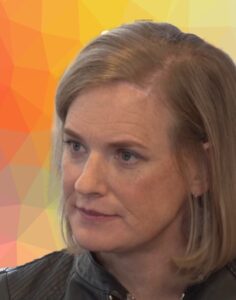Occupation
Inventor and Patent Draftsman
Birth/Death Dates
September 4, 1848 – December 11, 1928
Summary
Lewis Latimer’s many inventions included an evaporative air conditioner, an improved process for manufacturing carbon filaments for light bulbs, and an improved toilet system for railroad cars.
Latimer received a patent with Joseph V. Nichols for a method of attaching carbon filaments to conducting wires within an electric lamp and another patent for a “process of manufacturing carbons”, a method to produce carbon filaments for lightbulbs that reduced breakages during the production process by wrapping the filaments in a cardboard envelope.
Latimer was hired in 1884 by the Edison Electric Light Company as a draftsman and an expert witness in patent litigation on electric lights. While at Edison, he supervised the installation of public electric lights throughout New York, Philadelphia, Montreal, and London. In 1892, the Edison Electric Light Company combined with the Thomson-Houston Electric Company to form General Electric.
Educational Background:
Latimer attended farm school and enrolled in the U.S. Navy at age 16.
Struggles this Inventor Overcame
Latimer’s parents escaped from slavery in Virginia and fled to Massachusetts before he was born. Later, the Dred Scott case ruled that individual slaves needed to prove they had the consent of their owners to become free legally. Because his father, George Latimer, couldn’t prove he was free from enslavement, he was forced to flee to protect his family. The family then split up with Lewis and his brothers being sent to a farm school, while his sisters were sent to stay with a family friend.
Problems this Inventor Solved
Latimer’s inventions solved many problems that were prevalent at the time. For example, his contributions to the lighting industry helped make electric lighting more accessible and affordable. His safety elevator was designed to prevent riders from falling out and into the shaft.
How this inventor changed the world (or at least their corner of it)
While Thomas Edison is often credited with inventing the practical incandescent lightbulb, Latimer’s contributions to its development were invaluable, and he played a crucial role in advancing the technology.
He also played a role in the development of the telephone. In 1876, Alexander Graham Bell employed Latimer, then a draftsman for Bell’s patent law firm, to draft the necessary drawings required to receive a patent for Bell’s telephone.
Lasting changes from this inventor’s work or how they trailblazed
Latimer’s contributions to the lighting industry helped make electric lighting more accessible and affordable. Specifically, his innovations in the design of carbon filaments significantly improved the efficiency of incandescent lightbulbs, making them more practical for everyday use.
He was inducted into the National Inventors Hall of Fame for his work on electric filament manufacturing techniques in 2006.
The Latimer family house, now on Latimer Place in Flushing, Queens, NY was moved from its original location and turned into the Lewis H. Latimer House Museum in his honor.
https://en.wikipedia.org/wiki/Lewis_Howard_Latimer






